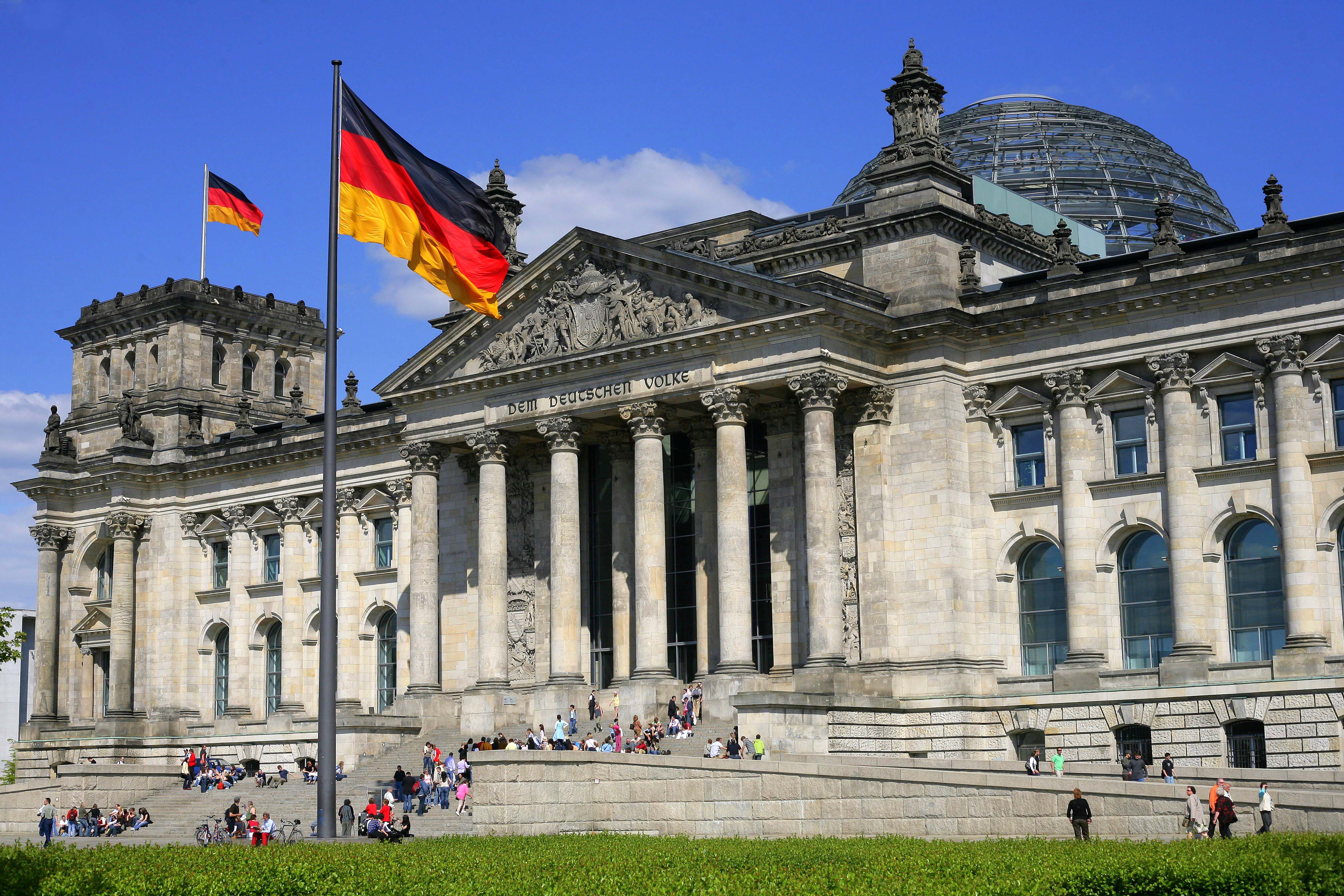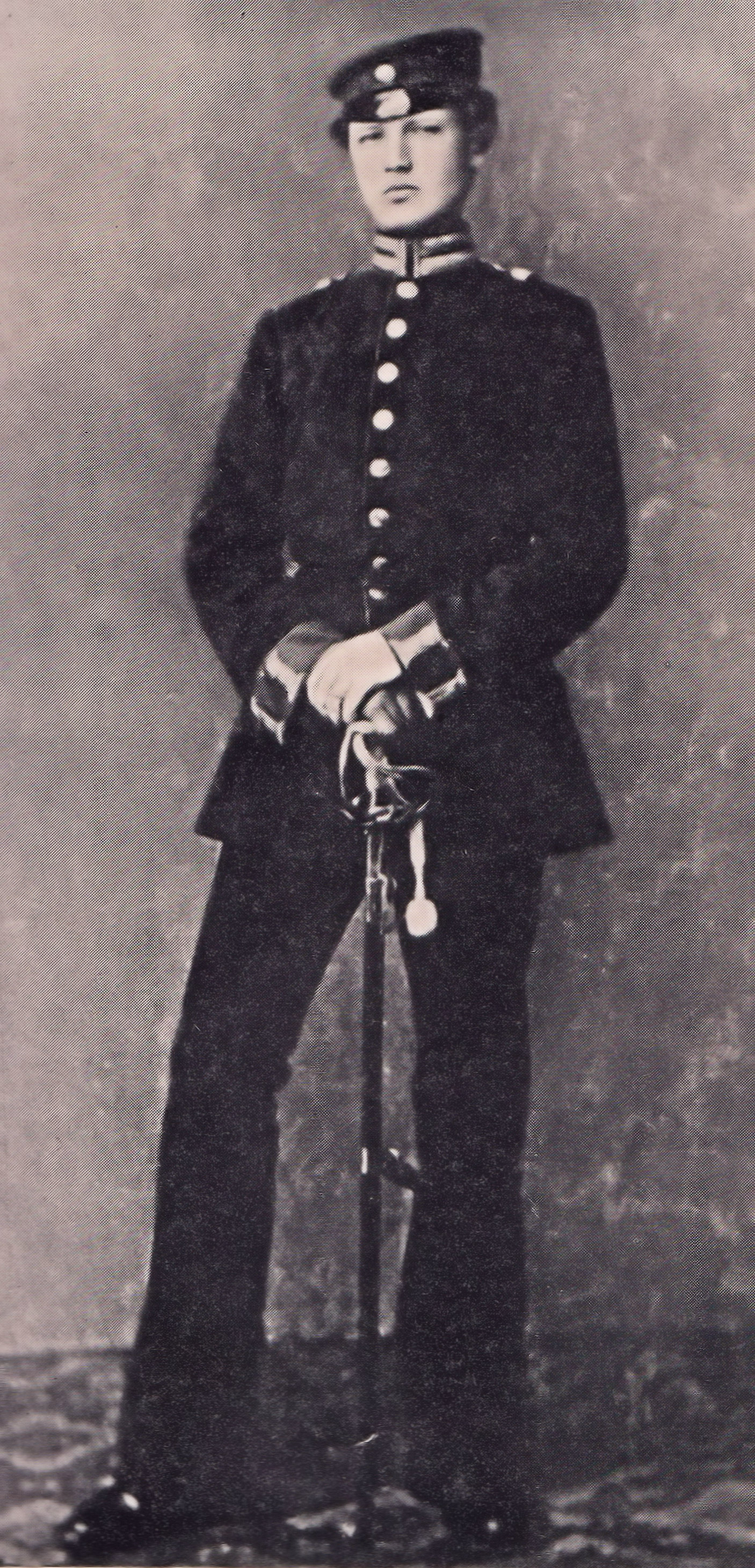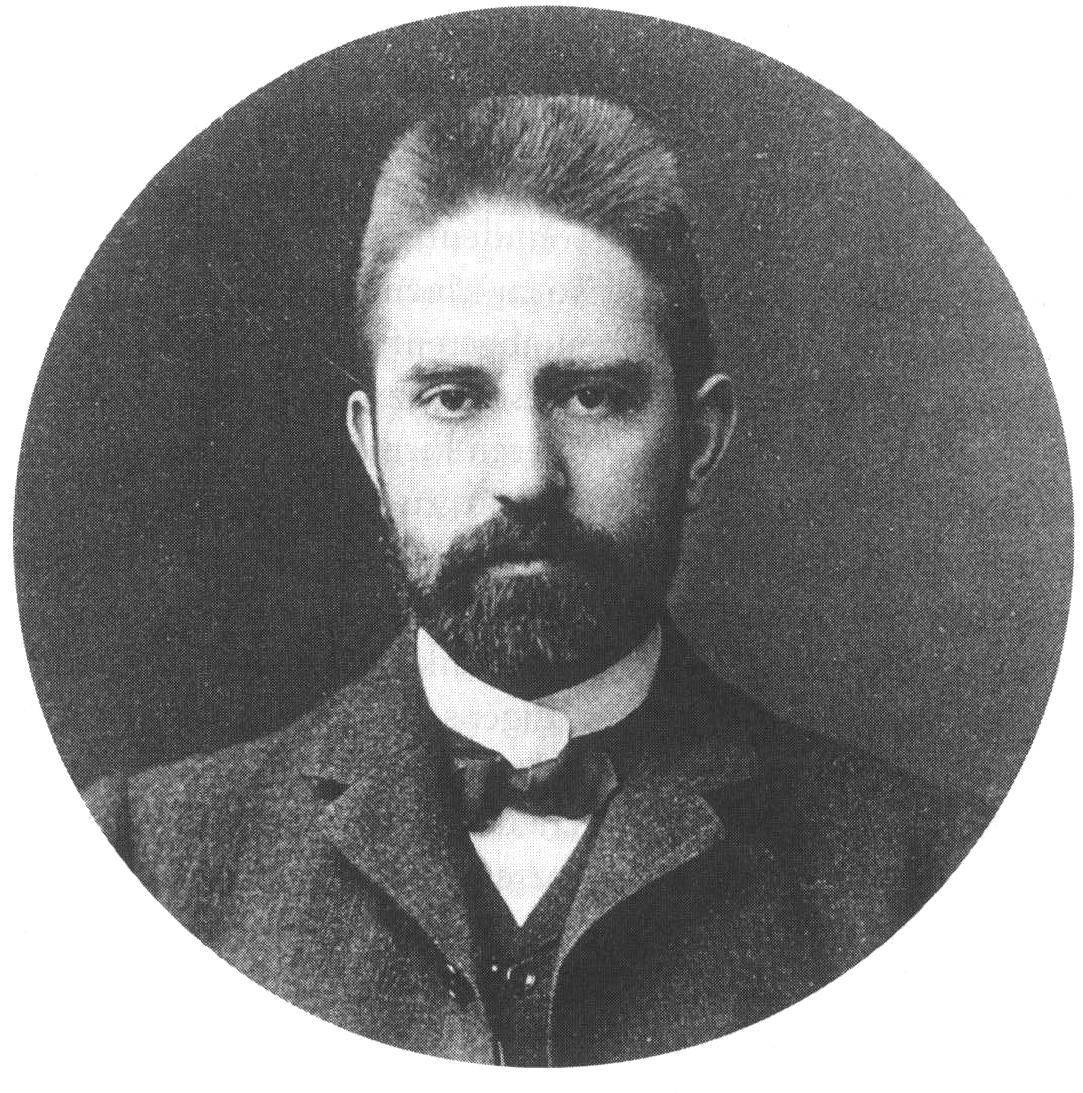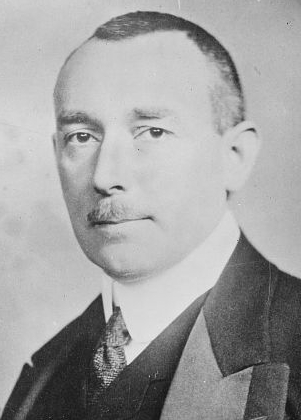|
German Fatherland Flag
The black-white-red flag (), also known as the flag of the German Empire, the Imperial Flag () or the Realm Flag (), is a combination between the flag of Prussia and the flag of the Hanseatic League. Starting as the national flag of the North German Confederation, it would go on to be commonly used officially and unofficially under the nation-state of the German Reich, which existed from 1871 to 1945. After 1918, it was used as a political symbol by various organizations. History Unification of Germany The flag was first proposed and adopted under the leadership of Otto von Bismarck, where it would be used as the flag of the North German Confederation which was formed in 1867. During the Franco-Prussian War, the German Empire was founded (i.e., the South German states joined the Confederation). Germany would continue using it until the German Revolution of 1918–1919, which resulted in the founding of the Weimar Republic. Weimar Republic and Nazi Germany The Weimar R ... [...More Info...] [...Related Items...] OR: [Wikipedia] [Google] [Baidu] |
Tricolour (flag)
A triband is a Vexillology, vexillological style which consists of three stripes arranged to form a flag. These stripes may be two or three colours, and may be Charge (heraldry), charged with an emblem in the middle stripe. Not all tribands are tricolour flags, which requires three unique colours. Design Outside of the name, which requires three bands of colour, there are no other requirements for what a triband must look like, so there are many flags that look very different from each other but are all considered tribands. Some triband flags (e.g. those of Flag of Germany, Germany, Flag of Russia, Russia and Flag of the Netherlands, the Netherlands) have their stripes positioned horizontally, while others (e.g. that of Flag of Italy, Italy) position the stripes vertically. Often the stripes on a triband are of equal length and width, though this is not always the case, as can be seen in the flags of Flag of Colombia, Colombia and Flag of Canada, Canada. Symbols on tribands may ... [...More Info...] [...Related Items...] OR: [Wikipedia] [Google] [Baidu] |
Reichswehr
''Reichswehr'' (; ) was the official name of the German armed forces during the Weimar Republic and the first two years of Nazi Germany. After Germany was defeated in World War I, the Imperial German Army () was dissolved in order to be reshaped into a peacetime army. From it a provisional ''Reichswehr'' was formed in March 1919. Under the terms of the Treaty of Versailles, the rebuilt German Army was subject to severe limitations in size, structure and armament. The official formation of the ''Reichswehr'' took place on 1 January 1921 after the limitations had been met. The German armed forces kept the name ''Reichswehr'' until Adolf Hitler's 1935 proclamation of "restoration of military sovereignty", at which point it became part of the new . Although ostensibly apolitical, the ''Reichswehr'' acted as a state within a state, and its leadership was an important political power factor in the Weimar Republic. The ''Reichswehr'' sometimes supported the democratic government, as it ... [...More Info...] [...Related Items...] OR: [Wikipedia] [Google] [Baidu] |
Flag Of Nazi Germany
The flag of Nazi Germany, officially called the Reich and National Flag (), and also known as the Nazi flag or swastika flag ( – ) featured a red background with a black swastika on a white disk. This flag came into use initially as the banner of the National Socialist German Workers' Party (NSDAP), commonly known as the Nazi Party, after its foundation in 1920. Shortly after the appointment of Adolf Hitler as Chancellor in 1933, this flag was adopted as mandatory for use, while the national one was the black-white-red triband of the German Empire. One year after the death of President Paul von Hindenburg, this arrangement ended. The Nazis banned usage of the imperial tricolour, labelling it as "reactionary", and made their party flag the national flag of Germany as a part of the Nuremberg Laws in 1935, which it remained until the end of World War II and the fall of the Third Reich. History Origins The design of the Nazi flag was introduced by Hitler as the party flag in mid- ... [...More Info...] [...Related Items...] OR: [Wikipedia] [Google] [Baidu] |
Flag Of Germany
The national flag of Germany () is a tricolour (flag), tricolour consisting of three equal horizontal bands displaying the national colours of Germany: Sable (heraldry), black, Gules, red, and Or (heraldry), gold (). The flag was first sighted in 1848 in the German Confederation. The flag was also used by the German Empire (1848–1849), German Empire from 1848 to 1849. It was officially adopted as the national flag of the German Reich (during the period of the Weimar Republic) from 1919 to 1933, and has been in use since its reintroduction in the Federal Republic of Germany in 1949. Since the mid-19th century, Germany has two competing traditions of national colours, black-red-gold and black-white-red. Black-red-gold were the colours of the German revolutions of 1848–1849, 1848 Revolutions, the Weimar Republic of 1919–1933 and the Federal Republic (since 1949). They were also Flag of East Germany, adopted by the German Democratic Republic (1949–1990). The colours Flag ... [...More Info...] [...Related Items...] OR: [Wikipedia] [Google] [Baidu] |
Paul Von Hindenburg
Paul Ludwig Hans Anton von Beneckendorff und von Hindenburg (2 October 1847 – 2 August 1934) was a German military and political leader who led the Imperial German Army during the First World War and later became President of Germany (1919–1945), President of Germany from 1925 until his death in 1934. He played a key role in the Nazi seizure of power in 1933 when he appointed Adolf Hitler as Chancellor of Germany. Hindenburg was born to a family of minor Prussian nobility in the Grand Duchy of Posen. Upon completing his education as a cadet, he enlisted in the Third Regiment of Foot Guards as a second lieutenant. He saw combat during the Austro-Prussian War, Austro-Prussian and Franco-Prussian War, Franco-Prussian wars. In 1873, he was admitted to the prestigious Preußische Hauptkadettenanstalt, War Academy in Berlin, where he studied before being appointed to the General Staff Corps. In 1885, he was promoted to major and became a member of the German General Staff. After ... [...More Info...] [...Related Items...] OR: [Wikipedia] [Google] [Baidu] |
Nazi Party
The Nazi Party, officially the National Socialist German Workers' Party ( or NSDAP), was a far-right politics, far-right political party in Germany active between 1920 and 1945 that created and supported the ideology of Nazism. Its precursor, the German Workers' Party (; DAP), existed from 1919 to 1920. The Nazi Party emerged from the Extremism, extremist German nationalism, German nationalist ("Völkisch nationalism, ''Völkisch'' nationalist"), racism, racist, and populism, populist paramilitary culture, which fought against communism, communist uprisings in post–World War I Germany. The party was created to draw workers away from communism and into nationalism. Initially, Nazi political strategy focused on anti-big business, anti-bourgeoisie, and anti-capitalism, disingenuously using socialist rhetoric to gain the support of the lower middle class; it was later downplayed to gain the support of business leaders. By the 1930s, the party's main focus shifted to Antisemit ... [...More Info...] [...Related Items...] OR: [Wikipedia] [Google] [Baidu] |
Kapp Putsch
The Kapp Putsch (), also known as the Kapp–Lüttwitz Putsch (), was an abortive coup d'état against the German national government in Berlin on 13 March 1920. Named after its leaders Wolfgang Kapp and Walther von Lüttwitz, its goal was to undo the German Revolution of 1918–1919, overthrow the Weimar Republic, and establish an autocratic government. It was supported by parts of the '' Reichswehr'', as well as nationalist and monarchist factions. Although the legitimate German government was forced to flee the city, the coup failed after a few days, when large sections of the German population joined a general strike called by the government. Most civil servants refused to cooperate with Kapp and his allies. Despite its failure, the Putsch had significant consequences for the future of the Weimar Republic. It was also one of the direct causes of the Ruhr uprising a few weeks later, which the government suppressed by military force, after having dealt leniently with lea ... [...More Info...] [...Related Items...] OR: [Wikipedia] [Google] [Baidu] |
German Nationalism
German nationalism () is an ideological notion that promotes the unity of Germans and of the Germanosphere into one unified nation-state. German nationalism also emphasizes and takes pride in the patriotism and national identity of Germans as one nation and one people. The earliest origins of German nationalism began with the birth of romantic nationalism during the Napoleonic Wars when Pan-Germanism started to rise. Advocacy of a German nation-state began to become an important political force in response to the invasion of German territories by France under Napoleon Bonaparte. In the 19th century, Germans debated the German question over whether the German nation-state should comprise a " Lesser Germany" that excluded the Austrian Empire or a "Greater Germany" that included the Austrian Empire or its German speaking-part. The faction led by Prussian Chancellor Otto von Bismarck succeeded in forging a Lesser Germany. Aggressive German nationalism and territorial expansion ... [...More Info...] [...Related Items...] OR: [Wikipedia] [Google] [Baidu] |
German People's Party
The German People's Party (German: , DVP) was a conservative-liberal political party during the Weimar Republic that was the successor to the National Liberal Party of the German Empire. Along with the left-liberal German Democratic Party (DDP), it represented political liberalism in Germany between 1918 and 1933. The party's best known politician was its founding chairman and later Chancellor and Foreign Minister Gustav Stresemann. With the exception of two short-lived cabinets in 1921 and 1922, the DVP was represented in all Weimar governments from 1920 to 1931. In the late 1920s it turned more to the right politically but could not compete with other nationalist parties. By 1932 the DVP's share of the vote had shrunk to barely over one percent, and it disbanded shortly after the Nazi seizure of power in 1933. History Foundation Following the end of World War I and the collapse of the German Empire, the party system in Germany remained largely in place because the groups ... [...More Info...] [...Related Items...] OR: [Wikipedia] [Google] [Baidu] |
German National People's Party
The German National People's Party (, DNVP) was a national-conservative and German monarchy, monarchist political party in Germany during the Weimar Republic. Before the rise of the Nazi Party, it was the major nationalist party in Weimar Germany. It was an alliance of Conservatism in Germany, conservative, German nationalism, nationalist, monarchist, , and antisemitic elements supported by the Pan-German League. Ideologically, the party was described as subscribing to authoritarian conservatism, German nationalism, and monarchism. Until 1931, the party also advocated for National liberalism, national liberal and Protectionism, protectionist economic policies, embracing corporatism, corporatist economic policies from 1931 onwards. Some members like the populist media mogul Alfred Hugenberg embraced Economic nationalism, economic nationalism and Statism, statism. Under Hugenberg the party is seen by some as a ''German Tory conservatism, Tory conservative'' party. It held anti-commu ... [...More Info...] [...Related Items...] OR: [Wikipedia] [Google] [Baidu] |
Liberalism In Germany
This article aims to give a historical outline of liberalism in Germany (). The liberalism, liberal political party, parties dealt with in the timeline below are, largely, those which received sufficient support at one time or another to have been represented in parliament. Not all parties so included, however, necessarily labeled themselves "liberal". The sign ⇒ denotes another party in that scheme. Background The early high points of liberalism in Germany were the Hambach Festival (1832) and the Revolutions of 1848 in the German states. In the Frankfurt Parliament National Assembly in the Frankfurt am Main Frankfurt Paulskirche (1848/1849), the bourgeois liberal factions Casino faction, Casino and Factions in the Frankfurt Assembly#W%C3%BCrttemberger Hof, Württemberger Hof (the latter led by Heinrich von Gagern) were the majority. They favored a constitutional monarchy, popular sovereignty, and parliamentary rule. Organized liberalism developed in the 1860s, combining the pr ... [...More Info...] [...Related Items...] OR: [Wikipedia] [Google] [Baidu] |
Conservatism In Germany
Conservatism in Germany () has encompassed a wide range of theories and ideologies in the last three hundred years, but most historical conservative theories supported the monarchical/hierarchical political structure. Historical conservative strains During the pre-revolutionary Vormärz era, the label conservatism united a loose movement of intellectual and political forces without any party organisation comparable to the British Tories. The tradition of conservative theorists like Justus Möser (1720–1794) opposed the Enlightenment tendencies and the ideals of the French Revolution. While many of the conservative theorists are labelled "political Romantics" (most notably by Carl Schmitt, himself a conservative), at least four strains are distinguishable before 1945: * '' Status quo ante'' Romantic conservatives, who wanted to restore the medieval as it was prior to the French Revolution. Notable theorists are Novalis, Friedrich Schelling, Karl Ludwig von Haller and A ... [...More Info...] [...Related Items...] OR: [Wikipedia] [Google] [Baidu] |






